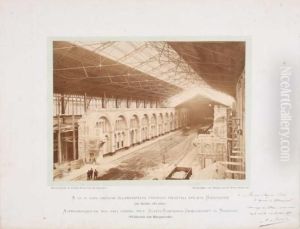Gyorgy Klosz Paintings
György Klösz was a Hungarian photographer renowned for his pioneering work in photography during the late 19th and early 20th centuries. Born on October 30, 1844, in Buda (now part of Budapest), Hungary, Klösz embarked on a journey that would see him become one of the most influential figures in Hungarian photographic art. His early life saw him move to Vienna, Austria, where he studied photography, a relatively new and evolving art form at the time. He was deeply influenced by the technological innovations and artistic movements of the period, which he would later incorporate into his work upon returning to Hungary.
Klösz's return to Budapest marked the beginning of a prolific career. He established his own studio, which quickly became a center for high-quality photography, attracting the attention of the Hungarian elite and royalty. Klösz was particularly noted for his portrait photography, capturing the likenesses of many prominent figures of his time with a level of detail and sensitivity that was unparalleled. However, his contributions to photography extended beyond portraiture. He was a pioneer in the use of photographic techniques such as panoramic photography and night photography, capturing the Hungarian landscape and Budapest's architectural grandeur in ways that had never been seen before.
Throughout his career, Klösz remained deeply committed to advancing the art of photography. He was involved in various photographic societies, and his work was exhibited internationally, earning him widespread recognition and several awards. His photographs not only serve as a valuable historical record of Hungary at the turn of the 20th century but also as testament to the artistic potential of photography. Klösz's legacy is preserved in numerous collections and museums, including the Hungarian National Museum, where his work continues to inspire new generations of photographers.
György Klösz passed away on November 2, 1913, in Budapest, leaving behind a body of work that remains influential in the fields of photography and Hungarian cultural history. His innovative techniques, artistic vision, and dedication to his craft have secured his place as a pioneering figure in the history of photography.
